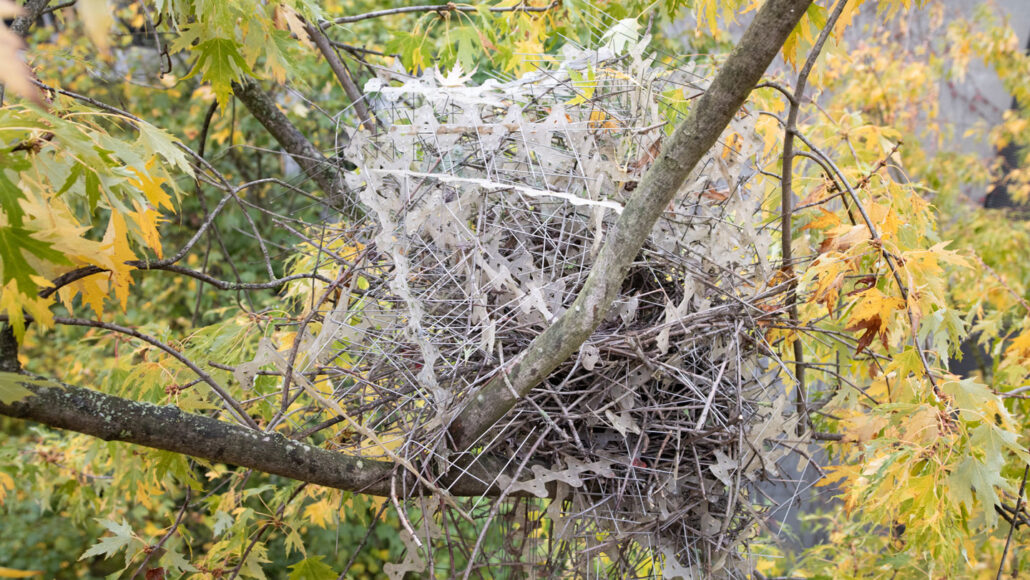Questions for ‘This bird nest becomes a ‘fortress’ using antibird spikes’

This Eurasian magpie nest sits in a sugar maple tree in Antwerp, Belgium. Unlike most magpie nests, it was made partly out of more than 1,500 “antibird” spikes.
Auke-Florian Hiemstra